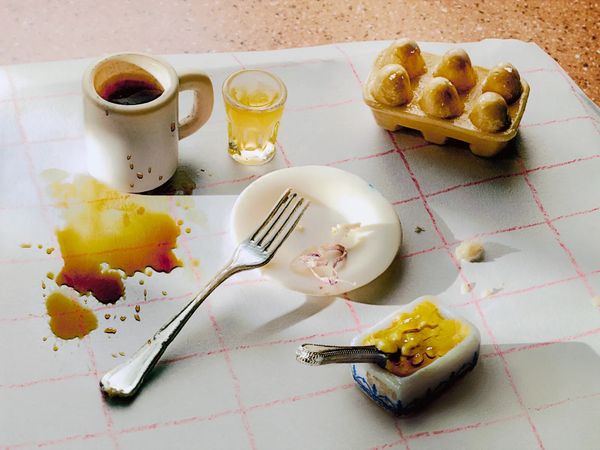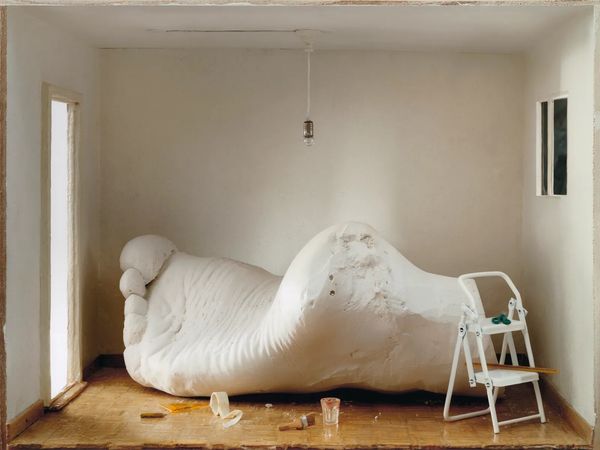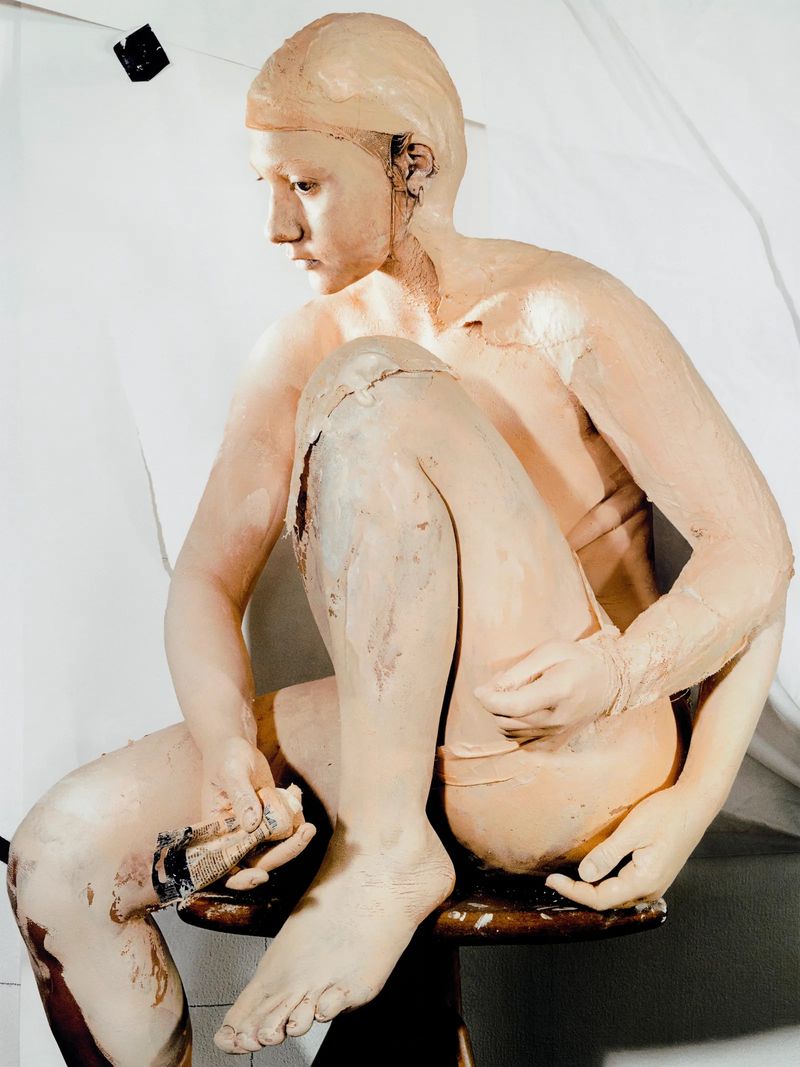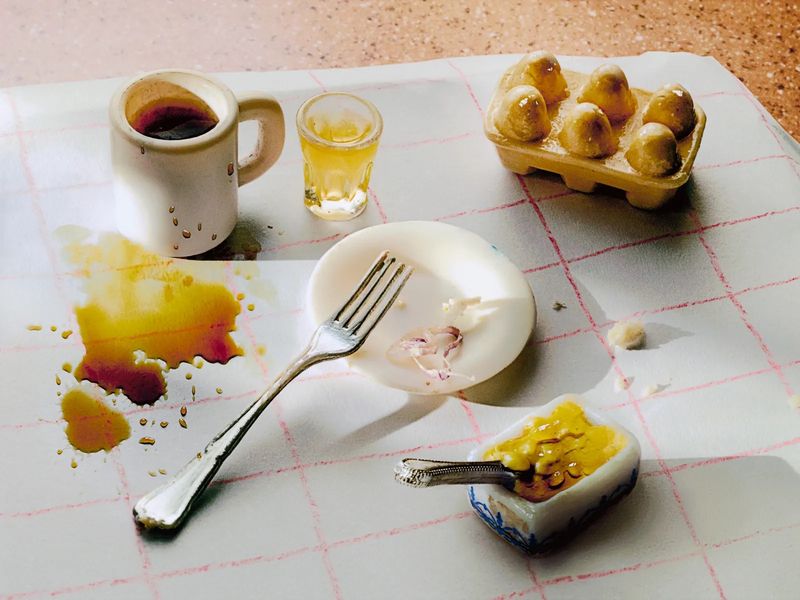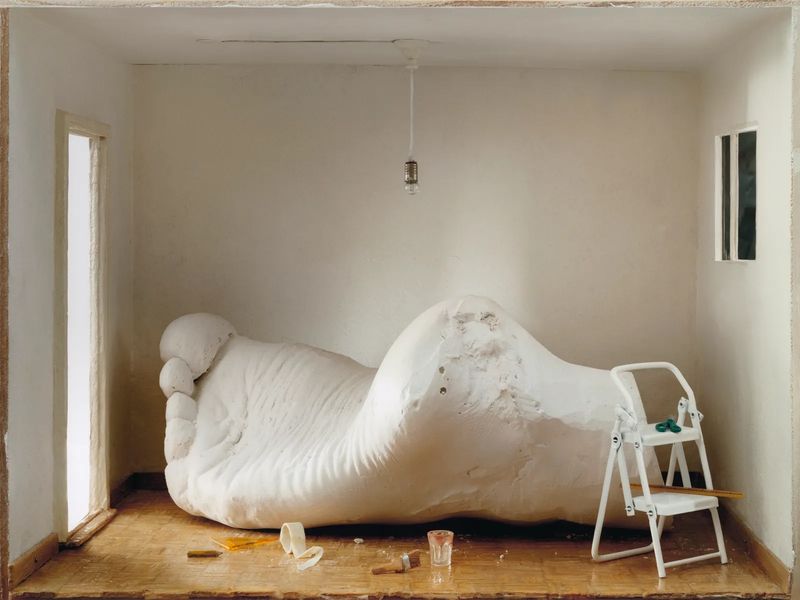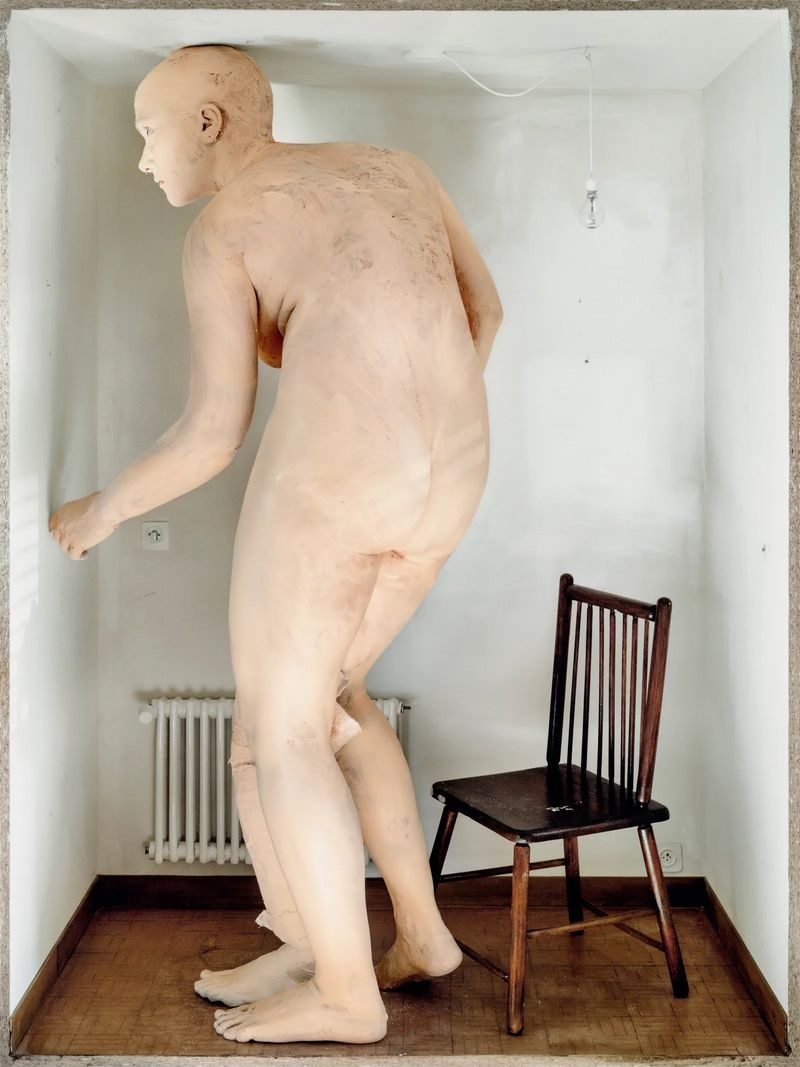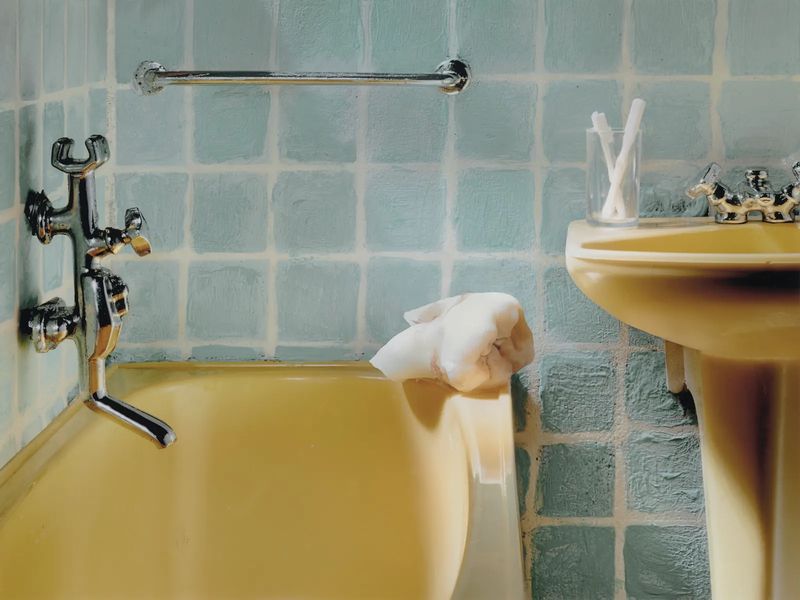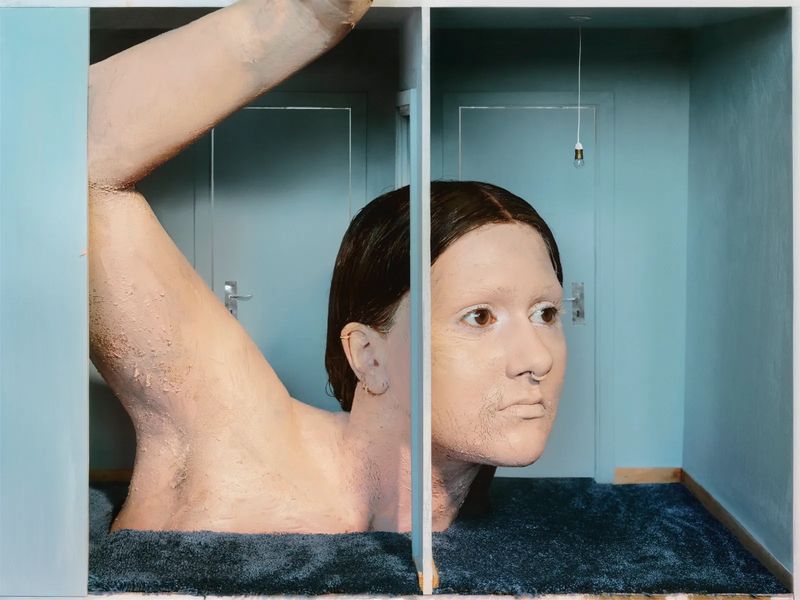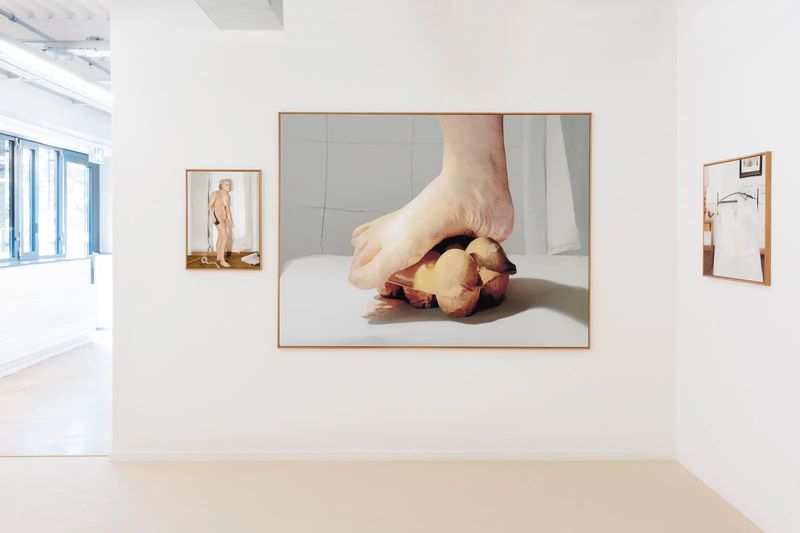Fragments of Home: Sara De Brito Faustino Turns Personal Trauma into Art
-
Published4 Feb 2025
-
Author
By reconstructing her childhood home, Faustino’s miniature world reshapes personal trauma into a visual narrative, inviting viewers to look closer and confront what lies beneath the surface.
At first glance, her work feels delicate—dollhouse-like interiors bathed in soft light, miniatures arranged with precision. But on closer look, things become unsettling. A tooth rests on the edge of a bathtub. A foot balances on an egg carton. A naked body sprouts extra limbs. These small-scale scenes blur the line between childhood wonder and something more fractured, more fragile.
A Home With No Roof explores what happens when childhood is unstable, when home is stripped of its sheltering qualities. Through carefully composed images, Sara De Brito Faustino creates a world where domestic life feels exposed—and the roof never fully closes. Her work wrestles with childhood and adulthood, protection and vulnerability.
Miniatures, an art her grandmother was dedicated to, became both a refuge and a tool to process trauma. By recreating her childhood apartment at a small scale, Faustino gained control over its memories. Yet, the delicate nature of these objects—carefully placed in the scene with tweezers—highlighted their fragility, reinforcing how easily things could break, an underlying tension that defines her work.
“I felt it would be easier on a smaller scale, because I would have control and I would have power over the stories and over the scenes,” Faustino explains. “So I started rebuilding my apartment on a small scale and it actually gave me a sense of control and of comfort. But also there is a certain fragility and vulnerability,” she says.
Faustino works with air-dry ceramics, paint, everyday scraps—like lids, packaging, discarded household items—transforming them into miniature bowls, pans, and plates. Objects take on new meaning.
And each image tells a story. In one, she appears pregnant, her belly sculpted from clay and plaster. But the focus here isn’t motherhood, she explains—it’s womanhood, and the tension between creation and confinement. She plays with contrast: hard against soft, solid against unstable. A foot presses onto an egg carton that somehow doesn’t collapse—fragility transformed into unexpected strength. In another, a seat appears to be made of butter, subverting expectations.
Stray hairs, body parts, and insects disrupt the stillness or her images, hinting at something unspoken. This quiet distortion mirrors her own experience—how a home can appear intact while something beneath the surface is unraveling.
“This idea that everyday life from afar seems really polished in a way, but when you live in a dysfunctional home, if you look closely, it becomes scary and disgusting,” Faustino says. “The idea of miniature is also to look close.”
One image stands out: an arm, newly constructed. In photographing this altered body, Faustino captures a sense of stability—as if, with an extra limb, she is now more anchored. Her work is indeed a process of rebuilding, both literally and metaphorically. She constructs this new protective shell—not just in objects, but in herself. What once symbolized fragility becomes a testament to resilience.
This idea of protection runs throughout her work. Childhood trauma often leaves one unprepared for adulthood, lacking the layers needed to withstand the world. Adding a third arm in her self-portraits becomes a metaphor for reclaiming strength—her body reconstructing itself, forging a new version of her. The outcome is ambiguous, but the gesture is clear: remaking oneself is both an act of healing and a recognition of past wounds.
At first, working in miniature was frustrating, Faustino recalls. Every object had to be placed with tweezers, every imperfection amplified. But over time, she realized these imperfections made the work more vulnerable—and paradoxically, stronger. And though she frames her project as an exploration of domestic dysfunction, its deeper undercurrent is domestic abuse. She deliberately leaves it unnamed, allowing viewers to project their own experiences onto the work.
This process—of deconstruction, reconstruction, and revelation—mirrors her own journey. True closure came when the images left her home, exhibited in a space where they could exist beyond her. The exhibition venue is a former apartment, which deepens this effect. The remnants of domestic life—a bathtub, a sink—blur the line between the artifacts and reality. Visitors often linger, unsure of what they’re seeing. At first, they might mistake the images for paintings or photomontages. But as they look closer, unsettling details emerge. At the end, they enter a full-scale room, revealing how the images were constructed. This final moment reshapes their understanding, sending them back to the photographs with fresh eyes.
--------------
All photos © Sara De Brito Faustino, from the series A Home With No Roof.
--------------
Sara De Brito Faustino lives and works in Lausanne, Switzerland. At the core of her practice, she explores the materiality of objects and the body, highlighting textures, colors, folds, wrinkles, fissures, strengths and weaknesses. Her artistic approach, infused with emotions, is focused on the intimate; self-portraiture and intimate space; home. Beyond technique, she uses photography to transcend emotions and a tumultuous personal history. Find her work on PhMuseum.
Lucia De Stefani is a writer and editor focusing on photography, illustration, and everything teens. She lives between New York and Italy. Find her on Instagram and Twitter.

